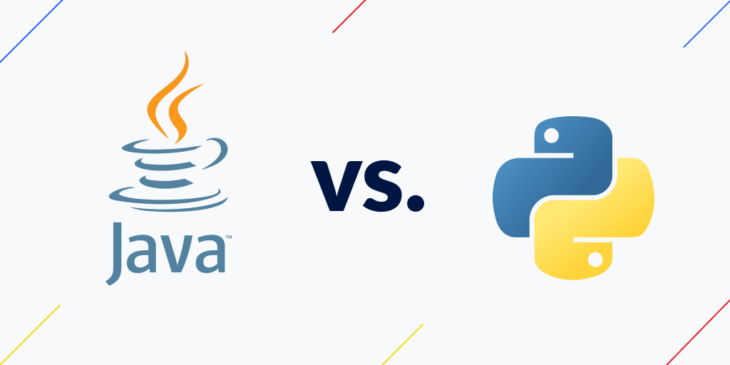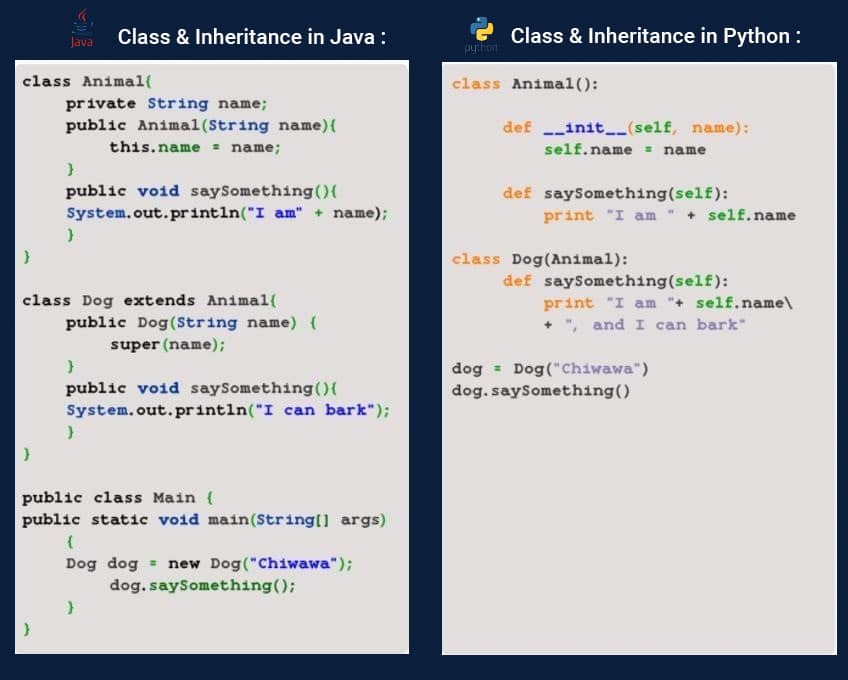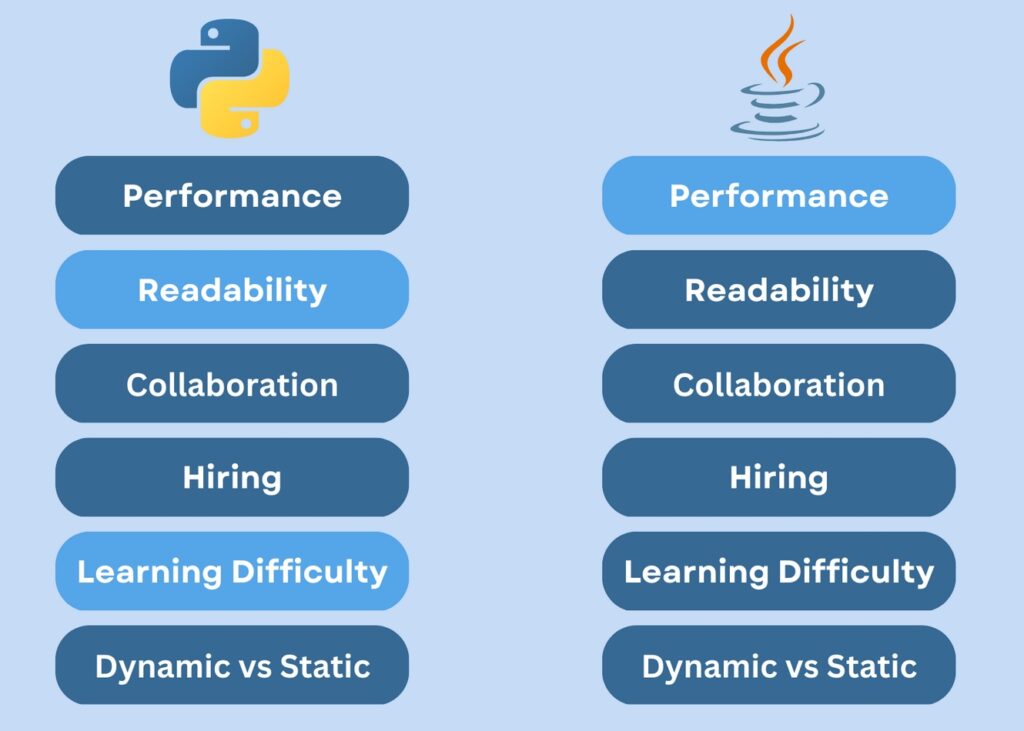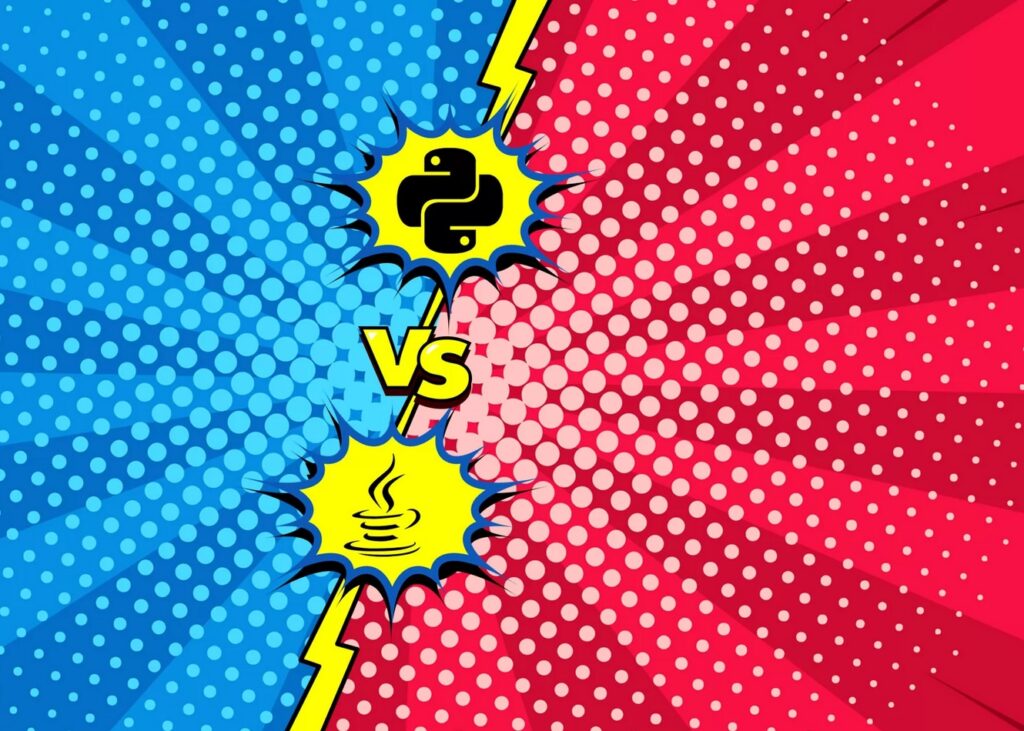
Java VS Python – Key Differences & Performance
When it comes to programming languages, Java and Python stand out as two of the most popular choices among programmers, and many people wonder if Python is better than Java. Both languages have their unique features and are widely used for various applications, including web, backend services, and software development.
In this article, we will delve into the differences between Java and Python development services from the perspective of Evrone, a web development company with more than 15 years of experience. We will compare their performance, syntax, and other essential aspects to help you make an informed choice for your needs.
Java, a compiled language, is renowned for its platform independence, making it an excellent choice for building cross-platform applications. Its robustness and scalability make it well-suited for large-scale software projects, and it has been a favorite for enterprise-level applications. On the other hand, Python’s simplicity and readability have endeared it to programmers, making it an ideal language for quick prototyping and scripting tasks. Its extensive libraries and support for machine learning have also made it a popular choice for data science and artificial intelligence applications.

What is the difference between Java and Python?
Python and Java may be similar as they are both versatile and widely used languages, but they exhibit significant differences across several important aspects. Let’s explore these variations in terms of typing, code readability and formatting, performance, syntax, portability, security, and mobile app development.
- Typing: One of the fundamental distinctions lies in their typing systems. Python is dynamically typed, allowing variables to change data types during runtime, offering greater flexibility. In contrast, Java is statically typed, requiring explicit declaration of variable types at compile-time, which can enhance code robustness.
- Code Readability & Formatting: Python’s minimalist and clean syntax promotes readability, making it a popular choice for beginners and experienced programmers alike. Its indentation-based block structure enforces consistent formatting, leading to code that is easy to understand. Java, while more verbose, adheres to a strict syntax, ensuring code uniformity in large projects.
- Performance: Is Java faster than Python? It often outperforms Python due to its compiled nature. Its bytecode runs on the Java Virtual Machine (JVM), allowing it to achieve high performance and efficient memory management. Python’s interpreted nature can result in relatively slower execution, especially for CPU-intensive tasks.
- Syntax: Python boasts a concise and intuitive syntax, reducing the need for boilerplate code. This simplicity speeds up development, particularly for small projects. Java, with its strong typing and explicit syntax, offers better code consistency and early error detection.
- Portability: Java’s “Write Once, Run Anywhere” (WORA) capability stems from its platform independence through the JVM. Python, while also cross-platform, may face slight challenges due to its interpreter-based approach.
- Security: Java’s strict type-checking and exception handling contribute to enhanced security and robustness. Python, being dynamically typed, requires thorough testing to ensure type-related issues do not lead to vulnerabilities.
- Mobile App Development: Are you thinking which one – Java or Python – is better for your future app? Well, Java’s longstanding presence in the Android ecosystem makes it the go-to language for Android app development. However, Python’s frameworks like Kivy and BeeWare are gaining popularity, enabling developers to build cross-platform mobile applications.
Java for Development: Benefits and Challenges
Pros:
- Platform Independent: Its “Write Once, Run Anywhere” capability allows programmers to build applications that can run on any platform with a Java Virtual Machine (JVM). This portability streamlines software deployment and reduces compatibility issues.
- Improved Code Reliability: Its strong typing and static checking help catch errors during compilation, minimizing runtime errors. This feature enhances code reliability and reduces the likelihood of unexpected crashes or bugs in production.
- Stable App Operation: Its mature ecosystem and extensive libraries ensure stable app operation, making it an ideal choice for mission-critical applications. It is widely used in enterprise-level software where reliability is paramount.
- High Performance for Large-Scale Applications: Its compiled nature enables it to achieve high performance, particularly for large-scale applications handling substantial amounts of data or user interactions.
Cons:
- Time-Consuming Development: Java’s verbose syntax and strict typing can lead to longer development cycles compared to languages like Python. Developers may need to write more lines of code to achieve the same functionality, which could slow down the process.
- Limited in Scientific Computing: While Java is versatile, it may not be the best choice for scientific computing and numerical analysis. Other languages, like Python with its extensive scientific libraries, are better suited for these tasks.
- Complicated Hiring of Skilled Engineers: Java’s enterprise-level applications often require highly skilled developers well-versed in the language’s complexities. Hiring such specialized talent can be challenging and may lead to higher development costs.
Understanding Java’s benefits and challenges will help you determine whether it is the right fit for your specific development needs. In the next section, we’ll explore Python’s strengths and weaknesses, providing you with a comprehensive comparison to aid your decision-making process.

Python for Development: Benefits and Challenges
Pros:
- Faster Development: Its concise and readable syntax accelerates the development process. With fewer lines of code required for the same functionality compared to languages like Java, developers can build applications more efficiently.
- Cross-platform Compatibility: Its interpreter-based approach ensures that Python code can run on various platforms without modification. This portability is advantageous for projects targeting multiple operating systems.
- Faster Code Changes: Its dynamic typing and interpreted nature enable quick code changes and immediate feedback during development. This flexibility facilitates rapid prototyping and iterative improvements.
- Good for Data Analysis and Machine Learning Applications: Its rich ecosystem of libraries, such as NumPy, Pandas, and TensorFlow, makes it an excellent choice for data analysis, scientific computing, and machine learning applications.
Cons:
- Limited for Mobile Apps: Its primary use is not mobile app development. While frameworks like Kivy and BeeWare allow cross-platform mobile development, Python may not be as popular as Java for native mobile app development, especially for Android.
- Additional Testing and Bug-Fixing: Its dynamic typing can lead to type-related errors that may only surface during runtime. Thorough testing is essential to ensure code reliability and identify potential bugs.
- Slower Speed: It interpreted nature can result in slower execution compared to compiled languages like Java. For CPU-intensive tasks, Python may not be as performant, which could be a concern for certain applications.
Understanding the strengths and weaknesses of Python is crucial in making an informed decision for your development projects.

Conclusion
In conclusion, the comparison between Java versus Python reveals two powerful and versatile programming languages, each with its own set of strengths and weaknesses. When choosing between those languages for your business needs, several key factors should be considered.
For projects that prioritize performance, especially in large-scale applications and backend services, Java’s compiled nature and strong typing make it an excellent choice. Its platform independence ensures wider reach, and its mature ecosystem guarantees stable operation for critical software.
On the other hand, Python’s simplicity, readability, and faster development cycle make it an attractive option for projects that require rapid prototyping, data analysis, or machine learning applications. Its cross-platform compatibility and extensive libraries enhance its appeal for various use cases.
Additionally, the skill set of your development team and the specific requirements of your projects will play a crucial role in making the right choice. If you have highly skilled Java developers and require a robust enterprise-level solution, Java may be the way to go. Conversely, if your team excels in Python and you need quick development with a focus on data-driven applications, Python is likely the more suitable option.
Ultimately, understanding the trade-offs and aligning the language’s capabilities with your project’s needs will lead to a successful and efficient development process. Choosing between them is not about determining which one is better overall, but rather which one is the better fit for your specific business objectives and technical requirements.